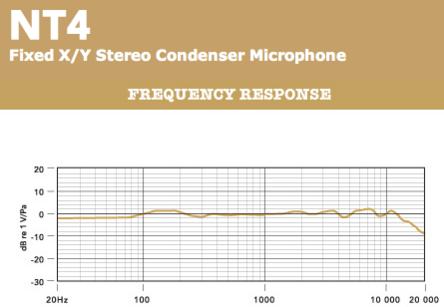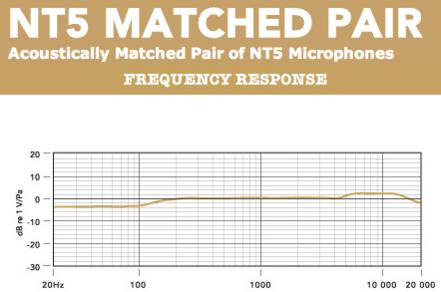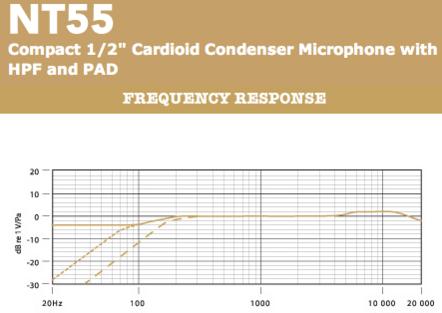Hi,
I'm new to all of this.
I'm looking to record some classical concerts in high quality.
I'm about to buy a Sony PCM-D50 as this seems to be about the best quality-wise in my current price range, and I'll be recording at 24 bit 96kHz (and playing them back on my high-endaudiophile hifi).
I'm also wondering if an external easily portable stereo microphone will be better and which one to buy?
Is two mono mics really better?
The D50 doesn't have XLR in. Is XLR-to-3.5mm possible?
Many thanks in advance.
Edit: I probably also need a basic introduction to microphone types, I don't know what omni-directional means yet.
Comments
I might suggest the ZOOM H4n over the Sony. This little unit sti
I might suggest the ZOOM H4n over the Sony. This little unit still has the ability to record it 24-bit, 96 kHz and has additional XLR phantom powered microphone inputs. It also makes for a fine USB external audio interface for a computer. It also has the ability to record 4 tracks simultaneously. This would give you the ability to mount the device on a tall stand relying upon its cardioid XY stereo microphones while also plugging in a pair of spaced outrigger omnis or cardioids. Both of which are a viable thing to do when recording a classical music ensemble. Most all of us do something like that when making orchestral recordings not relying on a single stereo pair.
Then you also have to decide and select whether you want uncompressed .wav recording capability or for extended record times (which really isn't necessary anymore because of large capacity memory chips) MP3 encoding which I don't recommend. Especially if you want purity of sound as your highest criteria. The MP3 encoding would be great for an all day rock 'n roll festival, for example.
I do both
Mx. Remy Ann David
Many thanks. I'm only interested in stereo and 24 bit quality,
Many thanks.
I'm only interested in stereo and 24 bit quality, not mp3 or 16 bit. For me the difference is huge.
As I understand it the Sony has better ADCs than the Zoom. Though I guess microphone/ADC combined quality is more important over all.
I'll only be able to have both mics close to each other, not widely spaced out.
I'll also because of situations, only be able to go for a minimalist approach, ie wired mics and battery powered recorder, no extra preamps and power supplies.
Am now rethinking which recorder to buy.
Any more input would be welcome.
I think you're being a silly fool. The ZOOM has far greater flex
I think you're being a silly fool. The ZOOM has far greater flexibility and its A/D converters are perfectly fine. And you also have the option of utilizing external phantom powered XLR microphones should you so desire. Most of these companies utilize chips from many common manufacturers for their A/D conversion. With the ZOOM unit, you could use any microphones you want on a tall collapsible aluminum stand, sitting at the base with headphones on. All on battery power and with the ability to also utilize its internal XY SDC while you might be running an MS stereo pair at the top of the stand. Try that with the Sony. I'm not a salesperson and I don't make any commissions on items that I recommend. Everyone else does. You can read advertising & marketing gobbledygook and believe whatever you want. You're talking to professionals here, like myself, who have over 40 years in the business. I've done all types of music recording from operatic, bluegrass, gospel, jazz, rock 'n roll, orchestral, television news. You are reading into nonsense. Do what you want, purchase what you want and when you can't get what you want, you've wasted your money. But if you have plenty of money, you got nothing to worry about.
I thought Australians were smarter than this?
Mx. Remy Ann David
RemyRAD, post: 389519 wrote: I think you're being a silly fool.
RemyRAD, post: 389519 wrote: I think you're being a silly fool.
Never a good start to any post.
I'm just being cautious.
RemyRAD, post: 389519 wrote: The ZOOM has far greater flexibility and its A/D converters are perfectly fine.
Flexibility doesn't show up in recordings, if anything it tends to reduce quality.
It is also not what ADCs you use, it is what you do with them. The DACs used in my digital music player are also exactly the same as those used in stuff more than ten times cheaper and at least ten times worse sounding.
What I'm looking for is something that is small and I will sometimes be recording where there won't be space to take up a lot of room with equipment - think recorder and mics under one of the chairs in the auditorium.
RemyRAD, post: 389519 wrote: You're talking to professionals here
Which is fantastics, I'm glad some are polite and patient with people completely new to the field.
So tell me if your parents and/or teachers haven't been on occas
So tell me if your parents and/or teachers haven't been on occasion a little gruff in their responses to someone who knows not what they do? You have asked a question, received an answer, countered the answer with this statement. And what happens when you do that to your parents or your teachers? Are we supposed to say that's a good little boy? I don't think so. You either learn something or you don't. And if you don't want to learn something, why should we waste our time with you? You're not even paying us and we're professionals. So we are giving of ourselves. I've had plenty of teachers that were not politically correct with their students. You still learn from that. You learn to take things in and not piss them off. If you are learning from a physics teacher how to make atomic bombs and you thought you had a better way to do it and they countered that, what do you think would happen? You'd flunk. That's what. I'm not trying to be mean but I can't suffer through stupid. Take a look at how many posts I've contributed to help others. I'm not asking any questions here I'm contributing to the betterment of audio recording. Because I know what I'm doing and I know what I'm talking about. You don't. That's why you're here, to learn. And you get to learn for free but then the old adage goes " something for nothing is worth nothing ".
Okay so now I'll have the question. Does the water go down the toilet in reverse action in the southern hemisphere?
Mx. Remy Ann David
I suspect my great mistake here was in not immediately getting a
I suspect my great mistake here was in not immediately getting across the non-professional nature of the recordings I'm planning to do. I won't have access to space, power supplies etc.
From reading comparative reviews and user experience posted on the web, the D50 consistently was given the edge over the Zoom for recording quality and lower self-noise, and from people doing a wide range of quality recordings, though not necessarily professional recordings for decades. Not that I was aware of your experience when I read your posts here.
Learning can sometimes be a slow process, or at least what has actually been going on here, changing ones mind from one consistently reinforced opinion to another can be. As I've said I'm now considering other recorders as this opens me up to a wider and more importantly higher mic quality, if these mics can run on internal batteries and XLR straight into the battery powered recorder that may well be at most 0.5m away.
And yes you are right, though I don't look at the toilet per say, but sink and bath, the water goes around in the opposite direction to when I lived in the UK.
Boswell, post: 389359 wrote: the best configuration for whateve
Boswell, post: 389359 wrote:
the best configuration for whatever is is you are recording, and this could go to cardioid configurations beyond the fixed X-Y of a single stereo mic to include ORTF and other patterns. If you went for SDCs that had interchangeable cardioid/omni capsules such as the Rode NT55 you could also include spaced A-B configurations.
Where can I read about these configurations?
Thanks.
The [="http://www.dpamicrophones.com/en/Mic-University.aspx"]DPA
The [="http://www.dpamicrophones.com/en/Mic-University.aspx"]DPA Microphone University[/]="http://www.dpamicro…"]DPA Microphone University[/] is a good place to read up on different microphones and placement techniques. Take the link to the home page and click on "stereo techniques".
goodegg, post: 389592 wrote: The NT4 has a very non-flat frequency response, compared with the NT55 and others.
Would you recommend a NT5 matched pair?
Are you sure you are looking at the correct data sheets? The NT4 uses the same capsules as the NT5 and the cardioids in the NT55 set, and while there are some differences between the mic models, there is much less difference between this group of Rodes and a lot of other makes of SDCs, many of which have a "hyped" upper end response. The NT5MP is a good set, but if you can stretch to the NT55MP you get a lot more flexibility.
The [[url=http://="http://www.youtube…"]Rode manufacturing technique[/]="http://www.youtube…"]Rode manufacturing technique[/] results in a consistency between units of the same model that is better than many other manufacturers' specific matching. The advantage in buying a matched pair of Rodes (models ending in "MP") is that they come in a good plastic box.
I don't have any connection with Rode other than being a very satisfied customer.






There are several points here. Firstly, the use of internal mi
There are several points here.
Firstly, the use of internal microphones or external. Serious use of a recorder like this needs the flexibility of being able to put the microphones on a stand 10 feet in the air when the recording demands it and still operate the recorder. This means that, no matter how good the recorder's built-in mics are, there will be occasions where external mics are essential.
Secondly, you imply the question of the difference between a single stereo external mic and a pair of mono mics set up in a stereo configuration. This is really convenience over flexibility. A single stereo mic like the Rode NT4 is very easy to carry around and set up, and can be used with an internal battery and the supplied 3.5mm jack cable as alternative to the pair of XLR connectors and phantom power. However, the flexibility of a pair of separate small diaphragm condenser (SDC) mics means that you could set them up in the best configuration for whatever is is you are recording, and this could go to cardioid configurations beyond the fixed X-Y of a single stereo mic to include ORTF and other patterns. If you went for SDCs that had interchangeable cardioid/omni capsules such as the Rode NT55 you could also include spaced A-B configurations. I know you said you are still learning about microphone types and configurations, so for the moment, just translate this option as flexibility and a reduced need to upgrade your mics in a short timescale.
Thirdly, the model of recorder and type of mic connectors that each type has. A recorder that only has 1/8" stereo jack is very limiting when it comes to using external professional microphones. Your choice of microphone is among the few decent ones that are available for video camera work, i.e. those that come with a 1/8" stereo jack, such as the NT4 mentioned above. The alternative is to use an external powering box such as the Sony XLR1, which would be an extra item to transport, connect up and provide batteries for. It all means that when it comes to choosing a recorder, you should consider giving extra weight to those that have built-in XLR connectors for external microphones and 48V phantom power available. Favourite among the inhabitants of this forum is the Zoom H4N, but although that unit has the advantage four tracks instead of just two, it does not have the 96KHz recording option.
In summary, the Sony PCM-D50 is a nice unit that will record at 96KHz and has good but limiting built-in microphones. To use professional external microphones, you would need the XLR1 battery box, which is an extra cost item to buy, keep powered and then lug around.